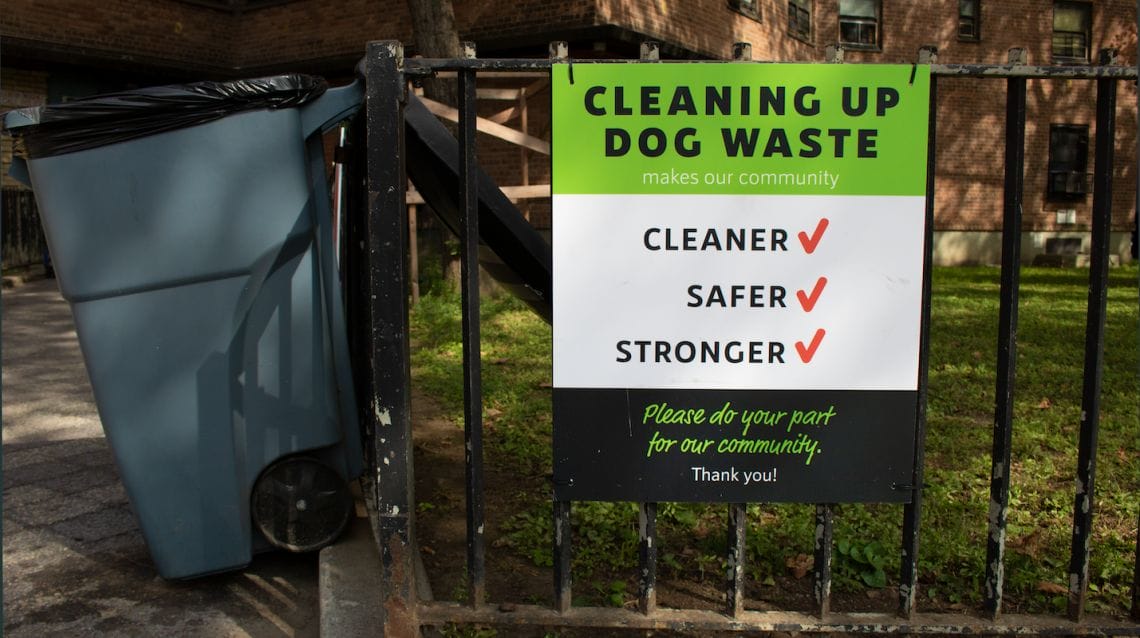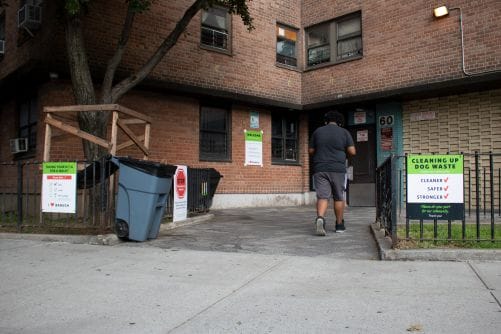For several years, city governments across the world have been incorporating insights from behavioral science to help design new policies and programs to solve important problems. This entails behavioral experts designing interventions to support groups or communities they themselves may not belong to. In fact, a strength behavioral scientists bring to pervasive problems is an outside, fresh perspective, combined with evidence of what has been effective in other contexts. This outside perspective makes it crucial to listen to people with lived experience in communities when designing solutions. At ideas42, that is always our aim—we conduct interviews with people who will be impacted by our interventions in order to diagnose barriers and inform new designs. But that doesn’t mean we do it perfectly, or that we don’t have our own biases that cause us to overlook important details.
In a recent project my team worked on to improve public housing, we saw the benefits of listening to residents—and the limitations of not listening enough. With support from our partners at New York City Housing Authority (NYCHA), John Jay College, and the Mayor’s Office of Criminal Justice (MOCJ), our team came together to address resident quality of life concerns arising from improper disposal of household trash, litter, and dog waste on NYCHA grounds. We created a robust set of interventions: we installed a set of large, moveable trash containers (tilt trucks) and trash cans in convenient locations and provided a package of communications posters to inform people of the new policy and encourage them to use the new infrastructure.
As a native NYCHA resident working on this project, I wanted to leverage my perspective to help the team better design and communicate our project to the NYCHA community. My experiences growing up in NYCHA and my position on our team gave me a special combination of formal expertise and tools from the behavioral sciences as well as a natural understanding of NYCHA community norms and values.
For anyone interested in project design in familiar and unfamiliar communities, these three insights showcase how highlighting and neglecting lived experience in design matters for the success of the overall project, and its impact on people’s lives:
Contextualize language choices
Our team’s package of communications posters was intended to inform NYCHA residents of new infrastructure installations for trash, litter, and dog waste. These posters were designed to speak to resident identities as NYCHA community members to create new social norms that would boost compliance with the new infrastructure installments. However, activating resident intentions to take care of their environment only works if we’re all on the same page about what that environment is.
When our team began drafting communications poster designs, we tailored each poster to the specific community where it would land. However, the signage included the formal, technical names of the NYCHA complexes that were used by NYCHA administration. What we needed instead were the informal, everyday names that residents used to refer to their specific NYCHA community.
Using the formal, administrative name for a NYCHA community on a poster that aims to introduce new social norms to a longstanding community only showcases the extent to which we are outsiders to these communities. As a NYCHA resident of what is formally known as Gouverneur Morris Houses I, I would have been totally unfamiliar with that term if I saw it on a poster; what I do know is that I live in the Morris community absent of any distinction between Gouverneur Morris Houses I and Gouverneur Morris Houses II. The same goes for the residents of what are formally known as Lower East Side Rehab (Group 5) and Seward Park Extension, better known as The Lower East Side and Seward Park. Because of my insight into the context of how naming works at NYCHA, I pushed our team to include the informal names of complexes on our posters in order to establish trust between the residents and our messaging, and ultimately the informal names are the ones we used.
Be intentional about product placement
As part of our strategy to get the intervention materials to residents, our team gave NYCHA property managers guidelines for where to best install new posters, trash cans, and tilt trucks. Although property managers were given the final say about where to place all materials, our team wanted to suggest a consistent strategy for placement. Because of my lived experiences with moving through NYCHA buildings and interacting with their many nooks and crannies, I was able to suggest a variety of locations to place our materials in order to capture resident attention. More importantly, my lived experience in NYCHA communities gave me an understanding of where not to place those materials. For example, I know that elevators, staircase doors, and mailbox areas are important spaces for residents and that the lobby door area, the parking lot, and resident hallways are not given much attention. The difference between putting a poster in the elevator vs. lobby door may sound minor—but regardless of our intentions to make an impact in the NYCHA community and no matter how good the design or messaging was, if we put our hundreds of intervention materials someplace no one looks, they wouldn’t be effective.
Value lived experience as legitimate knowledge
During the product design phase of this project, I raised concerns about the tilt truck handle to my team. When using the tilt trucks, residents had to first lift the lid to throw their trash inside. I mentioned that, from my own experience, NYCHA residents don’t like touching the handle of the small trash compactor located in their hallways and that because of this, the handle would limit our impact. However, my team remained skeptical about whether such a tiny detail would make a significant difference. As the most junior member on the team at the time, I doubted my own critique because I couldn’t prove my claim with anything other than my intuition from my lived experiences. Although my team was not antagonistic in response to my critique, their doubt was enough to dissuade me from trusting my gut. Ultimately, the burden of proof from my lived experiences in this instance felt too complicated for me to navigate and overcome.
During the study, one main piece of feedback that our research assistants, who interviewed residents after we rolled out the intervention, received was that the presence of the handle on the tilt trucks we purchased were a barrier to properly throw out trash. This was an issue because residents did not want to touch the (often dirty) tilt truck handle because they thought it was gross and were often on their way to work or school. For elderly NYCHA residents, they reported the handle to be a barrier because it was a heavy lift. This is a behavioral barrier: The disgust from touching the handle was enough to prevent people from using the tilt truck. Although our team is made up of people who use behavioral science and design thinking daily, we collectively overlooked this element. Notably, even though I did foresee the problem, it wasn’t because of my behavioral science knowledge, but my lived experience. This underscores that behavioral insights and lived experience are both valuable when developing new designs for any community. While our team still saw statistically significant improvement in how residents disposed of trash using the tilt trucks, this may not be an accurate measurement of the full potential of our intervention because of the tilt truck handle.
For NYCHA sites that received the new infrastructure, the average number of household trash bags decreased by 25%, the average amount of litter observed decreased by 16%, and the average instances of dog waste spotted decreased by 11%. Providing easier access to trash disposal infrastructure, complemented by community-oriented and instructional communications, reduced the burden of trash disposal for residents and significantly reduced the amount of trash visible on NYCHA grounds, demonstrating that new structures and resources can effectively change behavior.
A key aspect of our team approach to problem solving is our emphasis on the insights we can gain from listening to stakeholder perspectives on their own community. Over the course of this project, we were able to leverage resident perspectives, including my own, to inform project design and implementation. Nevertheless, our team’s missed opportunities to improve key design elements illustrates our own biases. To put it clearly, community is an invaluable resource in designing new infrastructure. As we continue to design and tailor interventions to the communities we wish to serve, we must avoid privileging formal, scientific knowledge over informal, everyday know-how from community members.






